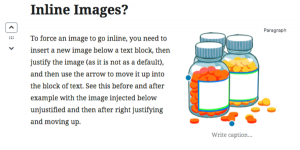
There seems to be as many theories regarding nonprofit direct mail as there are about the weather. No other area of today’s fundraising world has as many consultants and “experts” making their opinions known on a single subject.
Perhaps this is the case because it is relatively easy to accumulate a multitude of very detailed metrics regarding the performance of direct mail. With just a little bit of effort and a modern donor database, you can segment your mailing list and track the results from a multitude of angles. Another key reason for the vast number of opinions is the fact that nearly every single charity engaged in fundraising does some form or facet of direct mail.
Input from the Wise Old Sage
I know Jerry would not mind me using the term above since he often jokes about his age and oh so many years of experience. My friendship with Jerry Panas dates back more than 30 years. He was one of those mentors that I looked up to for wisdom and advice as far back as the early 1980s.
Jerry recently sent out his 15 personal favorite “Irrefutable Laws of Direct Mail.”
Immediately after reading the 15 rules, I sent Jerry an email asking if I could share them in an upcoming blog post. Just as quickly Jerry said, “Sure, if it will help your community, I am in!”
So without further ado, please read and enjoy what decades of experience and wisdom can bring with the list of 15 rules below:
1. The package should not feel or look too expensive. That’s not what captures attention. But the material should be in keeping with the style and character of the institution.
2. I do not believe photographs add to the package. In fact, they can be distracting. It’s the message that must be read. And if you do use photos, they tend to be postage stamp sized. They’re not very exciting.
3. As much as possible, the letter should look like the writer sat down at the computer and started typing. This is to be a personal letter from the writer to the probable donor. That’s why I don’t think photographs are a good idea. You don’t put photos in the middle of a personal letter. One thing more: studies show that the response is less when photos are used.
4. Getting your probable donor to open your envelope is your biggest challenge. Make certain that it’s compelling. Intriguing. The recipient makes a decision to open or to pitch the package in the first 6 seconds of looking at the envelope.
5. Keep in mind the first thing they look at is their name. Then the P.S. Next, the signature. And after that, the first paragraph. If you haven’t hooked them in the first paragraph, they won’t get beyond that.
6. They spend as much time looking at the return card as they do the letter. Make certain the card contains an appeal as compelling, dramatic, and urgent as the letter.
7. A one-time appeal does very little to capture attention and interest. Direct mail works best with multiple solicitations within a short period of time. “Get in their way”— that’s what I recommend.
8. Segmentation is the key. Your 30-year-old donor and your probable donor who is 70 have little in common. Neither do a lawyer and a teacher and a non-donor. Nor a doctor, a patient, and a nurse. You must approach them differently. They may be wearing the same t-shirt, but they do not act or think alike. That means your database has to work wonders for you. In some ways, it must turn itself into a pretzel to give you the kind of segmentation you need.
9. How do you like to receive an envelope with a label that is not fully typed or is at an angle? How about window envelopes? That’s what I thought! Use regular envelopes. Get the typing right.
10. Personalize every opportunity you can. Call Mr. Jones, “Mr. Jones”— and if you know him well, “John.” You’ve always known this and didn’t have to be told. But repetition is good for the soul. A person’s name is his or her most precious possession.
11. Worry a great deal about the strategy for your mailing, the creation of the package, and then being able to evaluate it later.
12. It’s helpful to go to a production house for all of the other stuff. It will pay off.
13. Successful copy is not written by a committee. You’ve probably learned this the hard way. If you let three or four get involved in reading your material, you’re sunk. Instead, have one (perhaps the signer) read the material and approve it. Trust your own good judgment. You’ve got style, savvy, and good common sense. You’ll know what works best.
14. The world of direct mail is best not left to an amateur. Writing the perfect piece is one part an art and one part a science— mixed generously with an intuitive sense of what will work. But it’s more a science. There are plenty of folks around who are very good in this field. If the package is done properly, it will not cost you. It will produce a great deal of money and a host of friends. I know several I believe are among the best. I will be pleased to share those names with you.
15. We have our greatest problem with the president of the college who signs the letter. Well, that’s the truth of it! “That’s not the way I write. It’s not my style. It’s not very dignified for a college president.” I understand all of that. The person who signs the letter has to understand that we’re directing the piece to a very special segment of the database. And every study shows that folks who respond read at an eighth-grade level.
Did Jerry miss any of your proven favorite rules? Please let me know if there are any new rules Jerry should add to his list.
I truly hope they make a difference in some manner for your direct mail efforts in the future!
Bonus: watch our Bloomerang TV interview with Jerry Panas:
Business & Finance Articles on Business 2 Community
(39)







